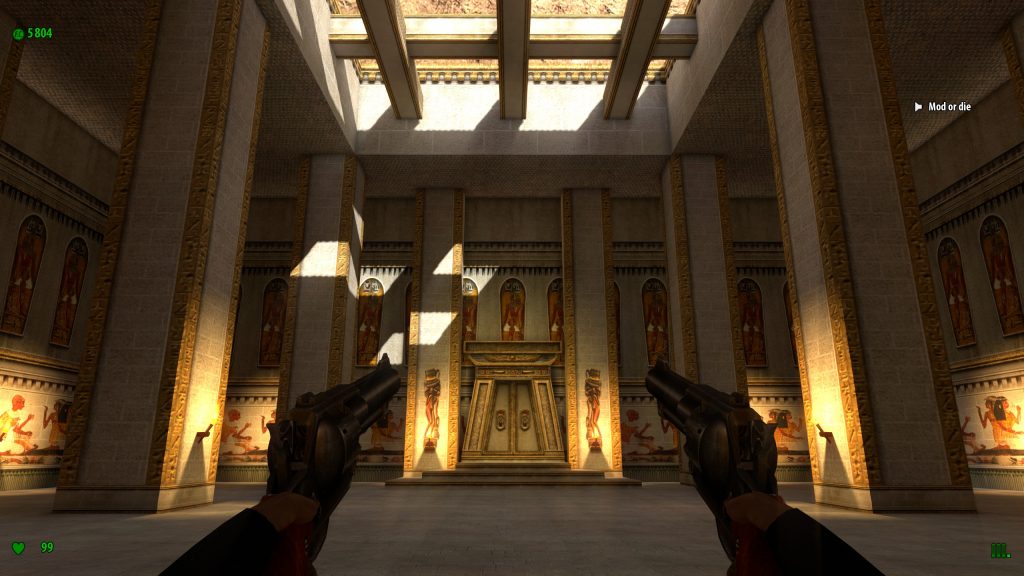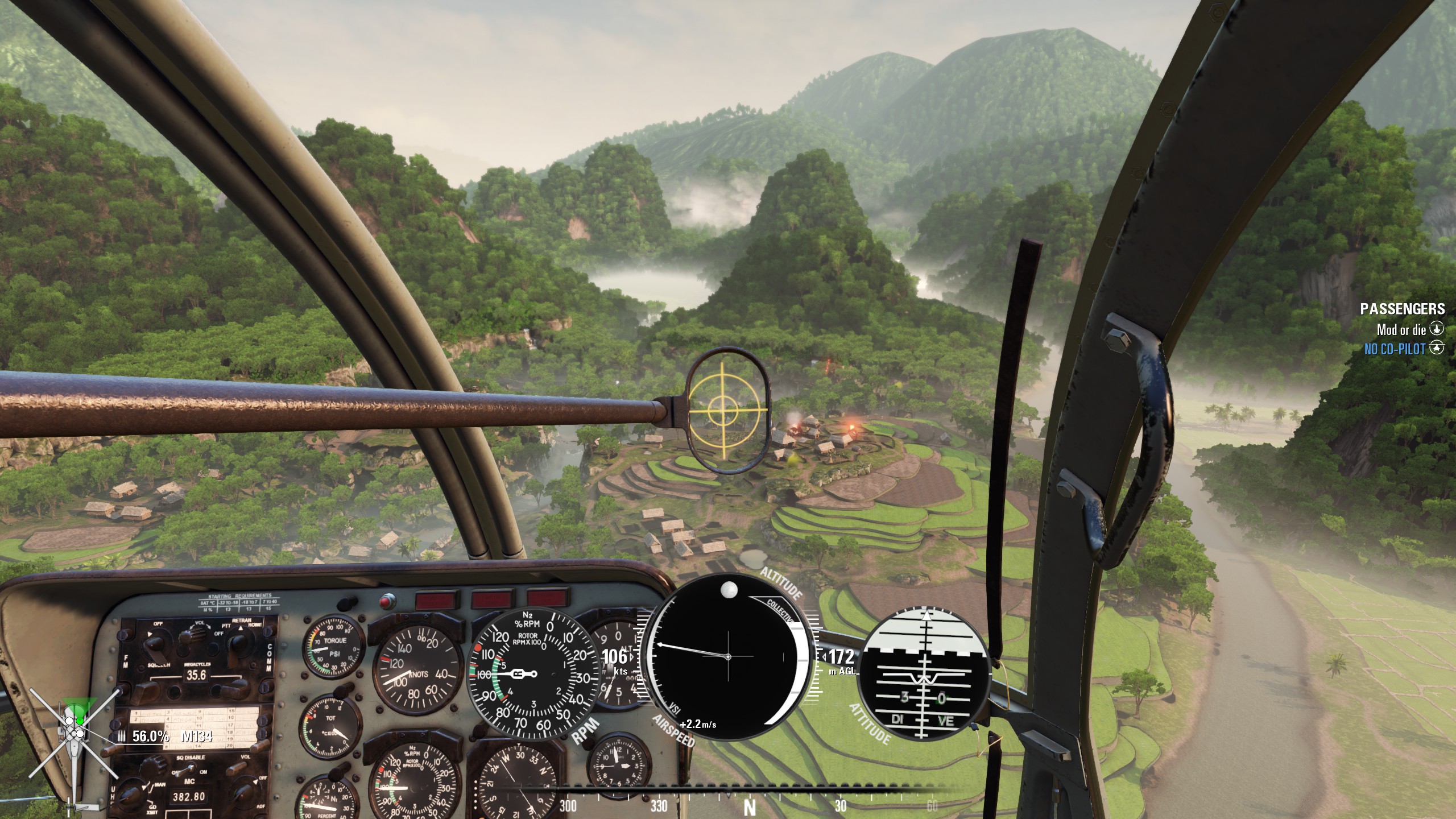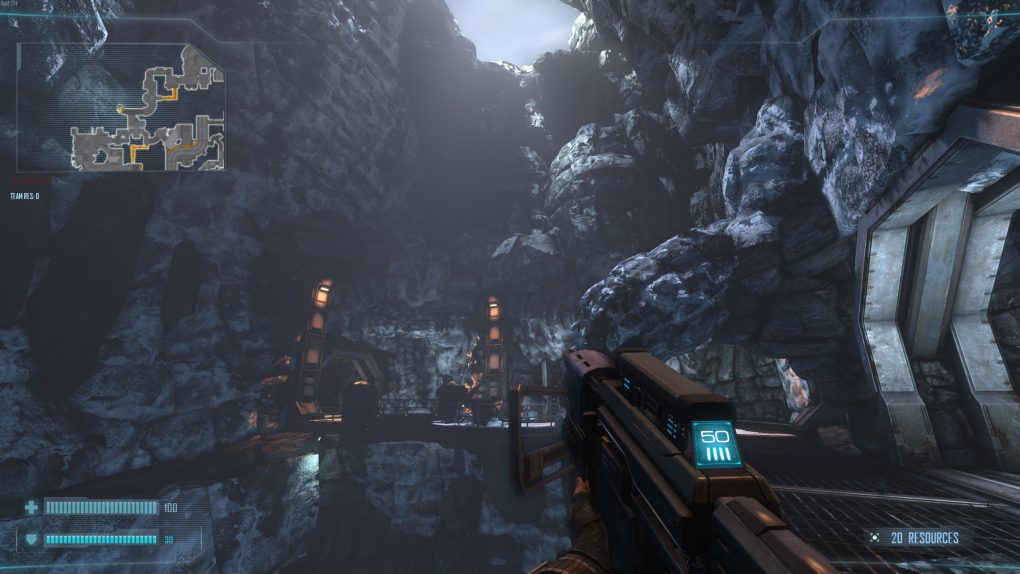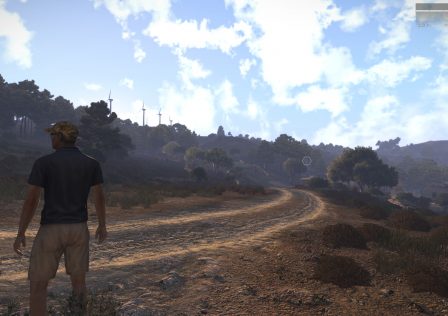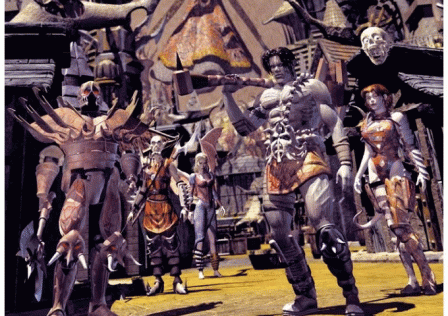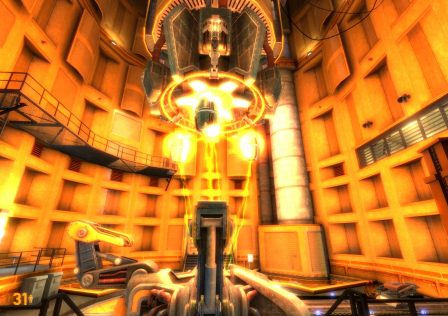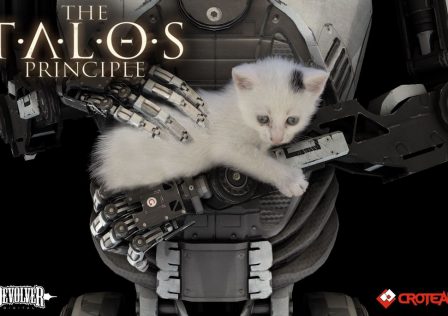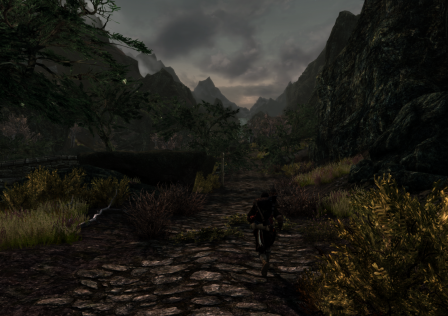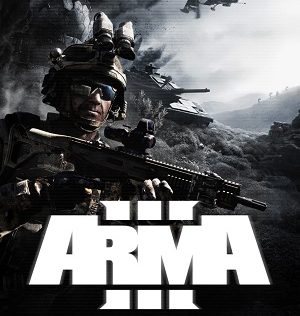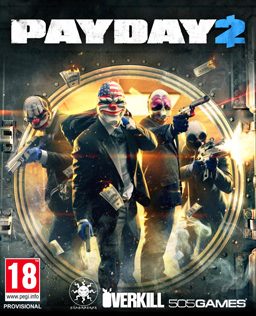Yearly sequels and rehashes are most common in the gaming industry today, and once the newest game is released these studios tend to completely ignore all past ones. But some game studios set a different example. A few game studios care more about their games and continue updating them over time, not only fixing bugs and adding content but also upgrading the engine to keep up with modern standards. It is these examples that we will be focusing on. This type of game support is very common in MMOs, which is almost a separate industry as MMO players tend to care very little about graphical fidelity. So in this article we focus primarily on games other than MMOs that have similar long term game support.
Before getting on with the pros and cons, let us first list the most prominent games we will be using as examples. These are not the only games with long term support, but they are rather popular and well known examples and none are “Pay To Win” games.
- Arma 3: Tactical shooter/military simulator released in 2013. Since its release, it now has over double the content mostly via paid DLC, and then even more with mods. It has been ported from a 32-bit engine to 64-bit, the sound system has been upgraded, its lighting system was remade, it has been rebalanced constantly.
- Natural Selection 2: A tactical PvP shooter and strategy game combined, released in 2012 on a highly modified Source engine. That engine has been upgraded considerably since then, as it now has a DX11 renderer (it shipped with DX9 and OpenGL only) and greatly improved visuals. The amount of content it had at launch has since been more than doubled (maps, structures) mostly via patches (so there was no charge), and its balance is constantly changed based on user feedback. Many other new features have been added, like new tutorials, UI changes, much more. Basically every aspect of the game has been improved since launch.
- No More Room in Hell: A free game which you can download from Steam. The game released in 2013 and since then has many new maps, weapons/items, and some engine upgrades (not as significant as Arma 3 engine upgrades though as they rely on Valve’s Source engine updates).
- PAYDAY 2: A very popular co-op FPS released in 2013. The amount of content has been much more than doubled since launch, as the devs have added a new class (complete with its own unique ability tree), new missions, new weapons and items, new characters, and many new features. Much of this content was released for free, much wasn’t. They have also made some engine upgrades and are currently in the process of updating all of its animations.
- Serious Sam Fusion 2017: This game is currently in beta, and its upgrades are not a series of patches and/or DLCs like the above games. It is a separate installation and a separate product; owners of Serious Sam HD on Steam get Fusion 2017 for free, but people who don’t own them on Steam will currently have to buy both Serious Sam HD: The Second Encounter and Fusion 2017. I suspect once this is out of beta they will sell a complete version that includes Serious Sam HD: The First Encounter, Serious Sam HD: The Second Encounter, and Serious Sam 3: BFE all combined into Fusion 2017 without needing to buy the 3 games separately.
- The Elder Scrolls V: Skyrim Special Edition: Like Serious Sam Fusion 2017, this is not the result of patches and DLC, but a separate release. Owners of the original Skyrim on PC get Special Edition for free. People without the original have to buy Special Edition separately. Special Edition is the same game as the original but ported to a newer 64-bit version of Creation (Gamebryo) engine, which mostly leads to stability improvements but also better lighting. It retains partial compatibility with mods for the original, but it is impossible to achieve full compatibility without modders updating their mods.
The Pros:
Considering the games we listed on the previous pages as well as our experience with other games with similar long term support, the following positives become obvious.
This is the biggest benefit, as indicated on the previous page. Games with such long term support receive more content, with the end result being a game with a staggering amount of content; so much that you might not be sure what game modes or missions to play first!
Multiplayer games like PAYDAY 2, Natural Selection 2, No More Room in Hell, Arma 3 (which is not multiplayer only, all of its scenarios are playable in single player) and others not mentioned on the previous page such as Rising Storm/Red Orchestra 2 and Killing Floor continually get new maps/missions, new weapons/items, and much more, to the point where they have more content than several AAA games combined!
Rising Storm/Red Orchestra 2 for example is literally two games combined into one; Red Orchestra 2: Heroes of Stalingrad released first in 2011. It is a PvP WWII FPS set in the Eastern European front—Russia versus Germany on Russian territory. Rising Storm came next, which is set in the Pacific theater of WWII—USA vs Japan. An AAA studio like DICE/EA would’ve released Rising Storm as a separate game, and both would have been $60. Instead, Red Orchestra 2 was released for $40 in 2011, and Rising Storm was added on top of it. Ever since Rising Storm, both games have only ever been sold together starting at $40 before the price started to drop as time went on. Two games in one. And with the Heroes of the West mod you get the Western European front as well. It helps that this game also embarrasses its AAA counterparts (namely Battlefield) in gameplay mechanics (in addition to quantity of content obviously), and nearly matches the recent Battlefields in sound fidelity. These games also periodically received new maps and vehicles added for free.
Other games with long term support might rely more on paid DLC/expansions (opposed to free DLC/expansions) to add content. Arma 3 and PAYDAY 2 are good examples of this. The Apex expansion of Arma 3 is massive (hence its price being nearly the same as the base game), basically a new Arma game that doubles the size of Arma 3. If Bohemia had released both Arma 3 and Arma 3 Apex as separate games (with Apex just being called Arma: Apex or even Arma 4) for $60 each, they’d still be far better deals than any AAA shooter since they dwarf every other shooter outside the Arma franchise in quantity of content. Huge open world maps and so many units, vehicles, equipment, and a powerful editor.
Arma 3 has its share of smaller DLC too, and some of it is slightly overpriced. Waiting for sales is a good idea. But Arma 3 also receives some vehicles and equipment for free occasionally.
Of all the games listed above, Arma 3 has received the most engine upgrades without the game becoming a separate download from the original. There is only one version of Arma 3, but now it uses a 64-bit engine instead of the 32-bit one it had at launch (improving performance), now it has a brand new lighting system compared to launch, the sound system has been overhauled, and so much more.
And then there are the mods. Arma 3 is nearly endlessly moddable just like its predecessors. In fact, you can import most of the content (units, structures, equipment, maps) from its predecessors into Arma 3 just by dragging and dropping some files! Many games in one essentially. And Arma 3 has too many mods to count, from custom maps to custom units, weapon packs, vehicle packs, custom campaigns, custom multiplayer game modes (which actually make up the majority of popular servers). Again, outside of the Arma franchise no shooter can compare in quantity of content.
In conclusion, regardless of genre games with long term support usually result with more content than any others in their genre. Substantially more. Neverwinter Nights and Neverwinter Nights 2 are examples outside of action game genres and the best RPG examples; each of these games was designed to be not just one game, but a saga. With the release of paid expansions (that were a great value) they now have a multitude of campaigns instead of just one like today’s RPGs.
Each of the major expansions (two for Neverwinter Nights, three for Neverwinter Nights 2) is big enough to be their own separate games, but integration into one game is nice and convenient (the same applies to every other game mentioned).
When providing long term support for years, this gives developers time to learn what the community wants (more on this later) and hone their skills. It is not uncommon for expansion packs to surpass the base game in quality, as a result of the developers learning and improving. Both Neverwinter Nights games demonstrate this, as do many others.
Likewise, it is not uncommon for some of the best missions and maps in multiplayer games with long term support to be ones added after the initial release. Prime examples include PAYDAY 2’s Big Bank heist and Shadow Raid heist. The former was a paid DLC, the latter was a free DLC. Both of these are some of the biggest, most elaborate heists in the entire game, if not the absolute biggest and most elaborate. The former has a unique pre-mission planning system inspired by Tom Clancy’s Rainbow Six. These heists not only have bigger, more complex maps, but more stages, more objectives, and potentially more rewards. Nothing comparable existed in the base game prior to their release.
Games with such long term support getting better content as time goes on is quite obvious really. This kind of long term support wouldn’t happen unless the game was initially popular, and to maintain their popularity the quality of their content can’t go down the drain.
Ask yourself which is more convenient, managing one game install or multiple? The answer is of course one game install, especially when you factor mods into the equation. Many games with long term support end up with as many content as multiple games combined, and some are in fact multiple games combined like Serious Sam Fusion 2017 and Rising Storm/Red Orchestra 2. To get all of that in one game is most convenient. Perhaps you want to play one of those “games” and then another back to back? You won’t have to close the game and launch another every time, instead a server can go from running content from one game seamlessly to another.
We have already alluded to this multiple times. What is a better value, spending $60 per year on games/sequels or spending $60 or less once, and then spending much less on expansions/DLC while also receiving free DLC? Games with this level of long term support tend to have more content than any AAA counterparts they might have, and cost less. Superior value does not get any more clear than that.
For a concrete example of this, you can look at the Battlefield games. $60 at launch plus numerous paid DLCs, and this holds true for its sequels which release either every year or every two year (this varies). $120 just for two Battlefield games if you buy at launch, each with minimal content since the goal of DICE/EA is to give you the bare minimum for $60 and encourage you to buy DLCs (some of the DLC being content from the previous games, and almost all of it being overpriced).
Alternatively, you could have spent $40 for Rising Storm/Red Orchestra 2 at launch back in 2013, which is two games in one. Excluding mods and paid DLC, they have a bit more content than two modern Battlefield games. In addition, they have extremely similar game modes, scale, gameplay concept, although Rising Storm/Red Orchestra 2 is far superior mechanically. $40 vs $120, and the $40 gets you more content, and then factor in mods which are only available for the $40 game which multiply that amount of content immensely for no extra charge. Which is the winner in value? It does not get more clear than that. You can throw in its sequel, Rising Storm 2: Vietnam, for just an extra $25 (this was its release price), and the total there is $65 for three games with so much modding potential as well as free content added over time. Win/win situation for the educated consumer.
This is related to the engine upgrades we mentioned earlier. The engines are kept up to date, often getting 64-bit compatibility if there wasn’t any initially, as well as new graphics APIs, improving stability on all systems. 64-bit engine upgrades are particularly important as it increases the amount of memory the game can address, avoiding lots of potentially severe issues and improving performance, as well as increasing potential for the game itself.
Since these games were all created years ago, as time goes on we receive new hardware and new operating systems. These games tend to support all of them, the hardware/OS from the time of their release all the way up to the present.
Serious Sam Fusion 2017 has got to be the best example of this. While it has lost DX9 support, it maintains OpenGL support down to version 2.0 I believe which dates back to 2004 (correct me if I’m wrong). Thus, very old graphics cards can still run the game, and new ones can take advantage of Vulkan since it supports that too.
As we mentioned earlier, many games with long term support rely on communication from developers. This is true of Croteam, Frictional Games, Tripwire Interactive, Bohemia Interactive, Overkill Software, Unknown Worlds, and more. They are active on their own forums as well as the Steam forum for their own games. They find out what people want and don’t want, and update their games accordingly.
This is what drives the balance patches in Natural Selection 2, and many of the content releases and also patches in most games mentioned so far. The result is a game that better satisfies its customers.
The Cons:
With competent enough developers, there is only one real negative to long term game support, which is as follows.
Years after the initial release, with all graphics improvements possible as shown by Arma 3 and Serious Sam Fusion 2017, the end result is that these games look fine by modern standards but not stellar. This is primarily because they use older environmental models still (on the initial release maps that is). No studio is going to replace all of their models, although modders can and have undertaken such endeavors (e.g. SMIM mod for The Elder Scrolls V: Skyrim).
This is the only inherent downside. Realistically speaking, studios providing long term support won’t redo all of their models to meet the latest top tier standards in fidelity. A tiny price to pay though for all of the benefits listed on the previous page. In fact, there is even a potential practical benefit from this downside. These somewhat outdated graphics are typically easier to run, letting you run most of the games we used as examples at extremely high frame rates (120+) on non-flagship single GPU systems. Not much of a benefit compared to a truly scalable, masterfully optimized modern game though, since such a game can do this on lower settings and possibly be cranked up to extreme levels of fidelity.
It is also worth mentioning that any studio looking to create a game and provide long term support for years to come should do so on a stable, scalable platform (engine). Arma 3 is a good example of this topic, since even with its engine upgrades it remains horribly CPU limited and the AI is very limited as well. Can they fix this with patches or a re-release? Personally, I doubt it.
Another good example is Total War: WARHAMMER. Its sequel releases this year, and a DLC will merge it into the original game. But their engine is not ideal, it is also CPU limited even if not as badly as Arma 3 (despite the presence of a DX12 renderer). Both this and Arma 3 will always be impossible to run at ideal frame rates because they are too CPU limited, not using enough cores/threads. All the long term support in the world will not change this.
This is not a problem if the initial game is built on a scalable engine. Serious Sam HD: The First Encounter and Serious Sam HD: The Second Encounter for example are built on Serious Engine 3—an outdated engine by today’s standards, but Serious Sam Fusion 2017 ports them (as well as Serious Sam 3: BFE which uses Serious Engine 3.5) to the latest and greatest version of Serious Engine. This engine is one of the better engines in the industry, being extremely scalable (can run on mid 2000s hardware and also take advantage of modern systems), is not very CPU limited (and this keeps improving), and supports some of the latest technologies like Vulkan API. It is one of only two games with a good Vulkan implementation (showing gains on all systems over DX11 in this case), the other being DOOM which is better than good.
So again, the only inherent downside is that a game with such long term support will never lead the industry in graphical fidelity. Not a big deal. Art design will always remain the most important visual aspect anyway.
Verdict:
Long term support is ideal for games that fit the model. It is ideal for most kinds of multiplayer shooters, many RPGs, all MMOs obviously, many kinds of strategy games, honestly it can fit into any genre really. It is best for the consumer while yearly rehashed sequels is terrible for them. We need more games with the kind of support shown by the examples we explored in this article.
But it is very important for such a game to be built on a stable, scalable engine, so that it can keep up with the latest and greatest technology. Croteam games are some of the only games with both long term support and an excellent platform/engine beneath it.
Customer awareness is key. No doubt that many are ignorant to just the presence of games with excellent support dating back more than a decade even, let alone the immense benefits. Such games aren’t charities either, they can raise immense profit margins for the studios behind them via paid DLCs/expansions, as long as the game is popular enough. But it does require more effort on behalf of the developers as they cannot half-ass everything like they do with yearly rehashes.
Let us know in the comments how you feel about long term supported games.

